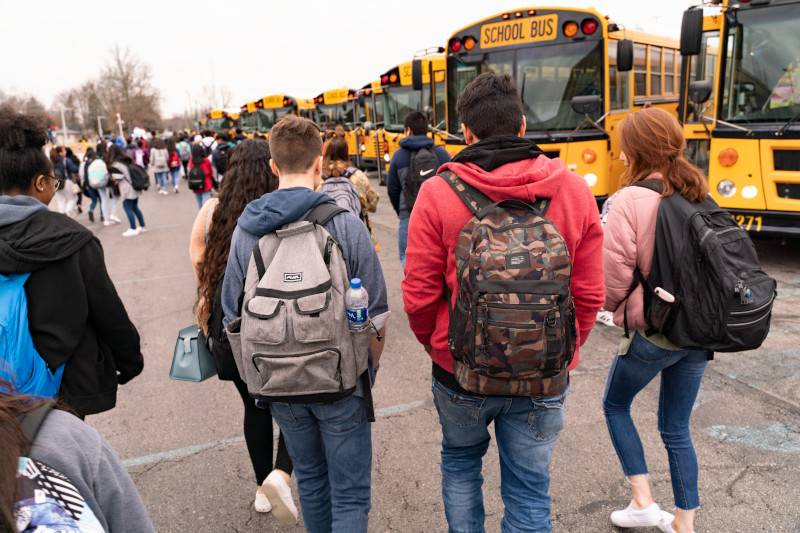Students from elementary age all the way up through college have had to adapt to a new way of learning remotely using laptops and webcams, while submitting their assignments in an online portal.
With students returning to the classroom en masse this fall, school districts need to be equipped with communication tools that ensure rapid coordination and response to health and safety emergencies to better prepare them for threats in the future.
In response to the COVID-19 crisis, the U.S. government issued the Elementary and Secondary School Emergency Relief (ESSER) program. This program was administered through the U.S. Department of Education and is meant to support efforts by states and schools to prevent, prepare for and respond to coronavirus.
Some educational institutions that are eligible for this program may not be aware, or if they are, they may not know how to apply.
Let’s talk about the different types of ESSER funds, how to apply and how they can be used to improve your district’s emergency communication via two-way radio.
What Can You Do With ESSER?
Allowable uses of ESSER funds
There are a number of technicalities that come with applying for and using ESSER funds for local education agencies (LEAs). Let’s start with the different types of ESSER funds and their allowable uses:
- ESSER I:
- Purchasing PPE.
- Training on how to properly sanitize and minimize the spread of COVID-19 and other illnesses.
- Purchasing supplies to sanitize and clean facilities.
- Planning for long-term closures, including providing meals and equipment for online learning.
- Addressing the needs of underprivileged children.
- Providing mental health services to those who need them.
- Summer learning and supplemental after-school programs.
- ESSER II: Similar to Esser I, but includes:
- Ventilation upgrades.
- Facilities improvements to address environmental health issues.
- Learning loss remediation.
- Purchasing technology needed for remote learning.
- Improving broadband access.
- ESSER III: Used mainly to return students to in-building operation for schools.
- Creating strategies and protocols that follow Centers for Disease Control and Prevention (CDC) health guidelines when reopening schools to keep people safe.
- Repairing and improving schools to prevent the spread of illness.
- Improving indoor air quality.
- Improving communication infrastructure.
Day Wireless Systems has successfully helped districts utilize ESSER I and II (and certainly III in the future) for communication infrastructure to facilitate emergency response and coordination to minimize the spread of COVID. Communication infrastructure in this case could be defined as towers, repeaters, two-way radios, software, and installation services.
How Do You Apply for ESSER?
Unfortunately, there’s no one universal way to apply. The process of applying for ESSER funding will depend on the SEA that your LEA operates under. Consult with your state education officials regarding the application process. Every SEA must give at least 90% of its ESSER funds to LEAs in need. Motorola has an Education Grant Assistance program that will help districts with this process.
What to Consider When Spending ESSER Funds
ESSER I and II funds are set to expire the soonest, so be sure to use those first. Any leftover funds can be used alongside ESSER III funds toward ESSER III available uses, including improving communication infrastructure.
Making sure your district has upgraded from an outdated analog system to a streamlined digital system is essential in enhancing school safety. Many districts have upgraded to digital IP Site connect radio systems. This allows repeaters to be connected via an IP network to create a large coverage area, for instance, covering an entire district rather than just a single school. Another popular application has been unifying transportation radios and “playground” radios on a singular network either through the use of a dispatch console or through an IP Site connect system.
Whether the situation calls for communication within or across schools or districts, two-way radio systems allow for instant and reliable communication so that appropriate personnel can act as soon as a problem begins.
These direct lines of communication can be critical in an emergency situation, allowing schools to keep in contact with First Responders. It’s a simple yet effective way to improve the preparedness and response efforts of LEAs, prioritizing emergency response during the reopening process.
It’s measures like these that allow schools across the country to remain open and stay safe for students and staff alike. Be sure to consult with your SEA or legal departments regarding fund allocation.
Day Wireless Systems can help you decide on the right solutions for your needs when it comes to communication, and we can install and integrate them, too. Contact us or visit our website for more information about how our cost-effective two-way radio equipment can boost your emergency response using ESSER funding.
